TALES OF MY FATHER
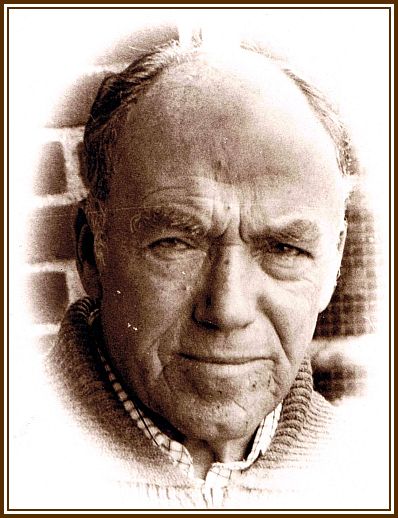
My Father, Charles Henry Jenkins (1908-1989)
Jack-of-all-Trades, Master-of-None ……. an enigma
-oOo-
TALE SIX:
THE WAR YEARS AND
THE LIBERATION OF BERGEN-BELSEN
CONTINUED
-oOo-
THIS TALE IS DEDICATED TO THOSE PEOPLE WHO SUFFERED THROUGH THE SECOND WORLD WAR AND THOSE WHO LOST THEIR LIVES AT THE HANDS OF THE REGIME.
IT IS OUR DUTY TO ENSURE THAT SUCH EVENTS STOP HAPPENING.
-oOo-
IF THE FOLLOWING ACCOUNT UPSETS, ANGERS
OR DISTURBS ANY READER,
PLEASE ACCEPT MY REGRETS AND APOLOGIES.
PLEASE BE AWARE THAT WHAT FOLLOWS IS
THE BRIEFEST OF ACCOUNTS ON THE RISE OF THE NAZIS
AND DOES NOT PRETEND IN ANYWAY
TO BE A FULL AND COMPREHENSIVE HISTORY.
I AM SURE THAT THERE WILL BE MANY READERS
WHO WILL TAKE UMBRIDGE AT WHAT I HAVE WRITTEN.
THIS IS NOT MY INTENTION.
THE PURPOSE OF THE ACCOUNT
IS SIMPLY TO GIVE A BRIEF BACKGROUND LEADING TO WHAT
MY FATHER, LIKE MANY OTHERS OF THE TIME, SUFFERED
WHEN THEY CAME TO BERGEN-BELSEN AND OTHER SUCH CAMPS.
-oOo-
PAGE FOUR:
II: THE LIBERATION OF THE CONCENTRATION CAMP AT BERGEN-BELSEN
-oOo-
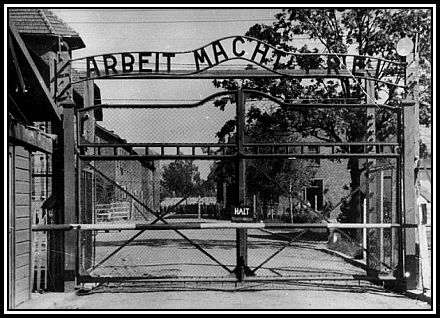 Arbeit Macht Frei (Work will set you free)
Arbeit Macht Frei (Work will set you free)
The slogan appeared at the entrance of Concentration Camps.
Shown here is the entrance gate to Auschwitz Concentration Camp
During the early years of The Nazi Regime, Concentration Camps were erected in order to incarcerate its opponents. In addition, to monitor the activities of Jews and others, Ghettos, Transit Camps and Forced-Labour Camps were set up and maintained in Nazi-Germany and occupied countries. The Forced-Labour Camps were also formed to house non-Jews that the Regime thought to exploit.
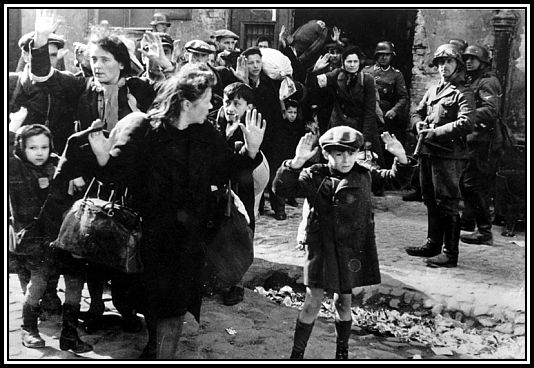 Forced Movement of Women and Children into the Warsaw Ghetto (1940-1943)
Forced Movement of Women and Children into the Warsaw Ghetto (1940-1943)
Eventually, hatred of the Jews led to the instigation of The Final Solution (German: die Endlösung der Judenfrage; English: The Final Solution of the Jewish Problem), known as The Holocaust (Hebrew: השואה, HaShoah; English: The Catastrophe; Greek: Sacrifice by Fire), where six million Jews were systematically murdered in specially constructed facilities (i.e. Extermination Camps).
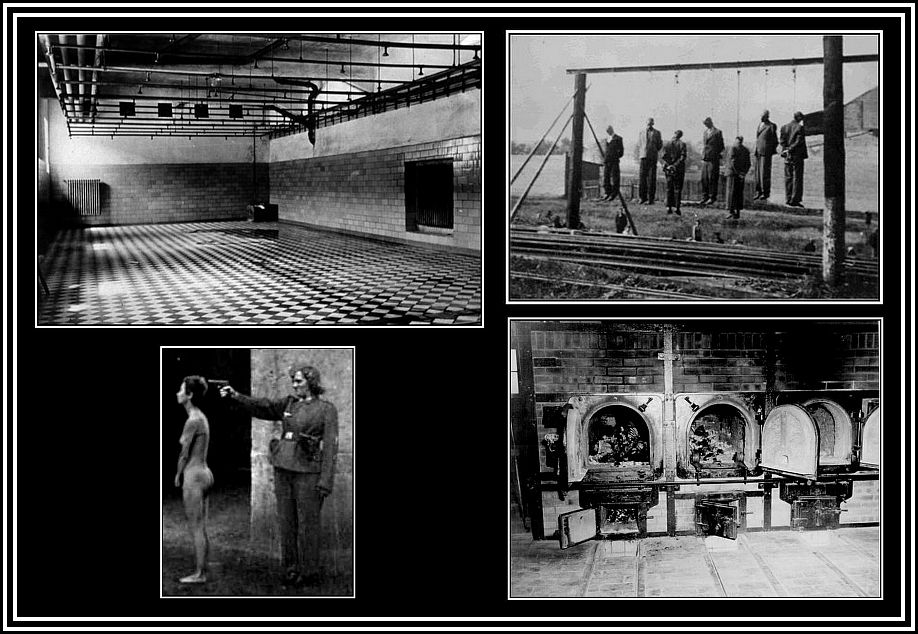 People were either gassed in large chambers (Upper Left), hanged (Upper Right) or shot (Bottom Left) and their bodies burned in ovens (Bottom Right) or buried in mass graves
People were either gassed in large chambers (Upper Left), hanged (Upper Right) or shot (Bottom Left) and their bodies burned in ovens (Bottom Right) or buried in mass graves
Others who also suffered a similar fate to the Jews included Romani (~200,000 people), the mentally and physically disabled (~200,000) and Slavs (between two and three million people including Poles, Russian and others from Central Europe) along with those persecuted for their political and ideological beliefs and behavioural activities, which included Communists, Socialists, Jehovah’s Witnesses and Homosexuals.
-oOo-
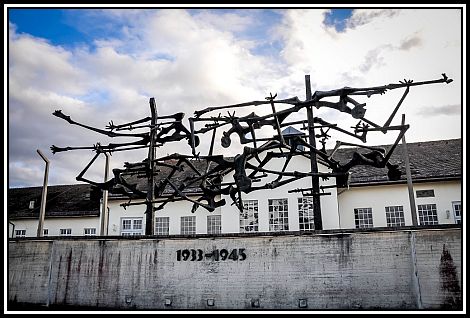 Memorial Sculpture at the Dachau Concentration Camp
Memorial Sculpture at the Dachau Concentration Camp
The first Concentration Camp in Germany was set up at Dachau and was founded in March 1933. With the outbreak of The Second World War, the number of people interned in such Camps increased into millions and it is thought that approximately 1,200 such Camps were eventually established in countries occupied by Nazi–Germany.
There were six Extermination Camps established in Nazi-occupied Poland: Auschwitz-Birkenau, Belzec, Chelmno, Majdanek, Sobibor and Treblinka. Jews and other undesirables were transported to these Camps where they were systematically murdered.
-oOo-
Inmates were made to wear overalls with different coloured badges that identified their category: Communists and other political prisoners were distinguished by red triangles; professional/common criminals wore green triangles; Homosexual men wore pink triangles; Jehovah Witnesses, purple triangles; asocials and those who were unemployed, black triangles; Romani wore brown triangles; and Jews were distinguished by the wearing of yellow ones.
 The Nazi Badge System
The Nazi Badge System
From Holocaust Minorities
-oOo-
It is commonly believed that prisoners at all Concentration Camps had their Identification Number (Camp Serial Number) tattooed on the left arm. In fact, only prisoners at the Auschwitz Concentration Camp received such a tattoo. Since many of these prisoners were moved to other Camps, where some were later liberated, the belief spread that all prisoners had in fact been similarly abused.
It was the practice at Auschwitz for the newly arriving prisoners who were able to work to be assigned a Camp Serial Number which was sewn onto their prison uniforms. Prisoners destined to be sent directly to the gas chamber were not registered and given no number. When prisoners died, their clothing was removed and their serial numbers written on their chests using indelible ink to allow identification. As the death rate rose, the authorities began the practice of the tattooing of Camp Serial Numbers on the left arms of registered prisoners to aid identification in the advent of their death.
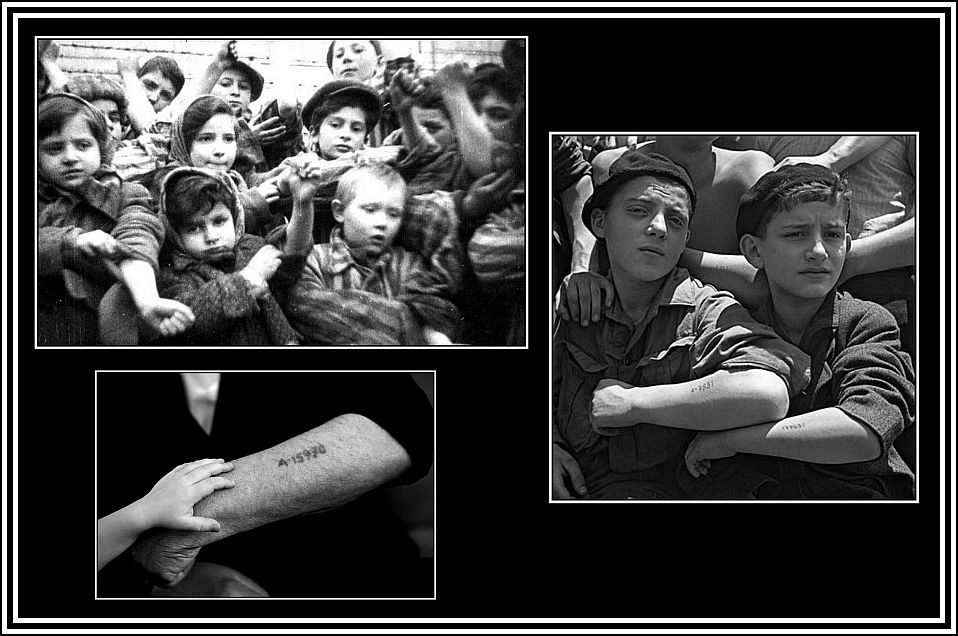
-oOo-

One such Concentration Camp was established at Bergen-Belsen in Lower Saxony (Northern Germany) in 1943. The Camp had originally been a Prison-of-War-Exchange Camp where Jewish hostages were held prior to being exchanged for German prisoners held overseas. Later The Camp was enlarged to hold Jews from other Camps. Although not officially a Death/Extermination Camp, many were burned and hanged here.
-oOo-
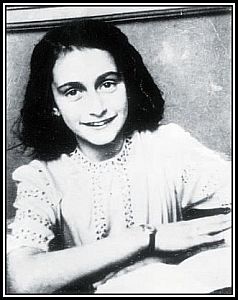 Anne Frank (1929-1945)
Anne Frank (1929-1945)
Among the many that died in this Camp were Annelies Marie Frank (Anne Frank; 1929-1945) and her sister, Margo (1926-1945). Anne Frank maintained a diary while hiding from The Nazis in a house in Amsterdam together with members of her family from 1942 until 1944.
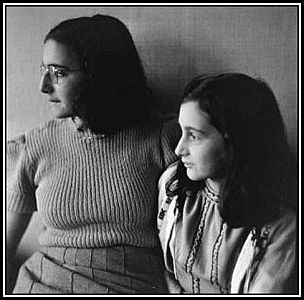 Margo & Anne Frank
Margo & Anne Frank
Her writings were published post-posthumously, as The Diary of a Young Girl (originally titled Het Achterhuis; English title: The Secret Annex) and has since sold over thirty million copies and has been translated into sixty-seven languages.
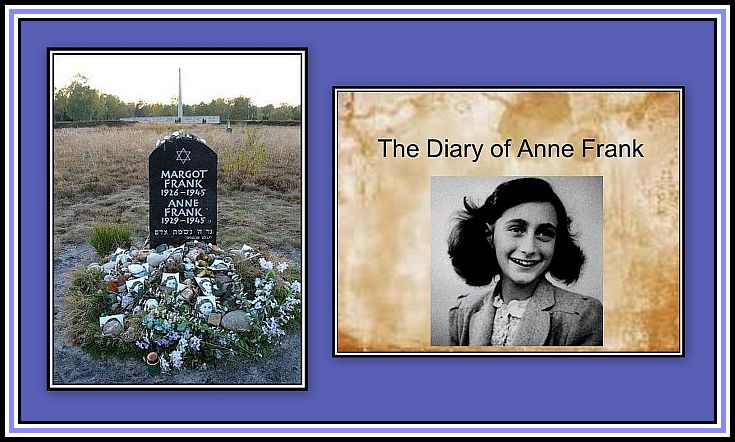
-oOo-
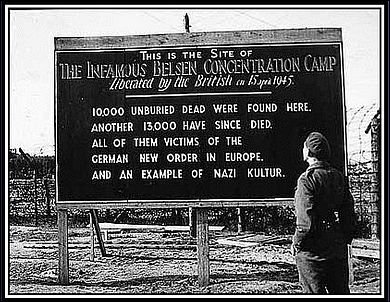 Entrance to the Concentration Camp at Bergen-Belsen
Entrance to the Concentration Camp at Bergen-Belsen
I am unable to find suitable words to describe what the Concentration Camp at Bergen-Belsen must have been like. Others have described it fully and accurately. However, for me, the most chilling description of what it was like is that given by the BBC Correspondent, Richard Dimbleby, when he entered the camp with the British 11th Armoured Division on the 15th April, 1945 when it was finally liberated.
-oOo-
PLEASE BE AWARE THAT THE FOLLOWING VIDEOS CONTAIN STRONG MATERIAL AND VIEWING MAY PROVE TOO DIFFICULT FOR SOME READERS
Richard Dimbleby’s account of the liberation of The Camp at Bergen-Belsen
British Pathe film of The Camp (there is no commentary)
Descriptions of The Camp by the Liberating Officer and The Doctor of the Women’s Camp
Part of an episode from the television series, Band of Brothers, showing the liberation of a Camp
Although this is a fictional account of such an event, it is none-the-less powerful
-oOo-
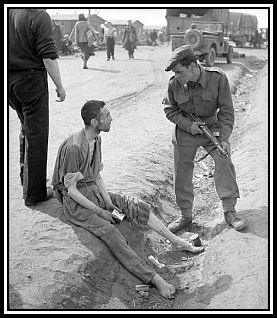 A British Soldier talking with a Survivor
A British Soldier talking with a Survivor
My father never talked to me about what he had seen at Bergen-Belsen. He had the habit of leaving the room whenever a television programme aired graphic footage of film showing The Concentration Camps on the pretense to go and make a cup-of-tea or else go outside and into his shed.
My mother said that he had spoken periodically to her about the horrors that he had seen at The Camp although he never spoke for too long on the subject. He did say that what he had seen was beyond being unbelievable. He told her that upon his arrival, there were many dead men and women left laying on the ground in heaps or else tossed into mass graves, all obviously forgotten by the authorities running the place.
 Some of the Dead of Bergen-Belsen
Some of the Dead of Bergen-Belsen
In addition, there were a number of survivors standing motionless in small groups and starring vacantly at the liberating soldiers without appearing to register what was now happening. There were dressed in what resembled stripped pyjamas and were virtually skeletons with sunken eyes.
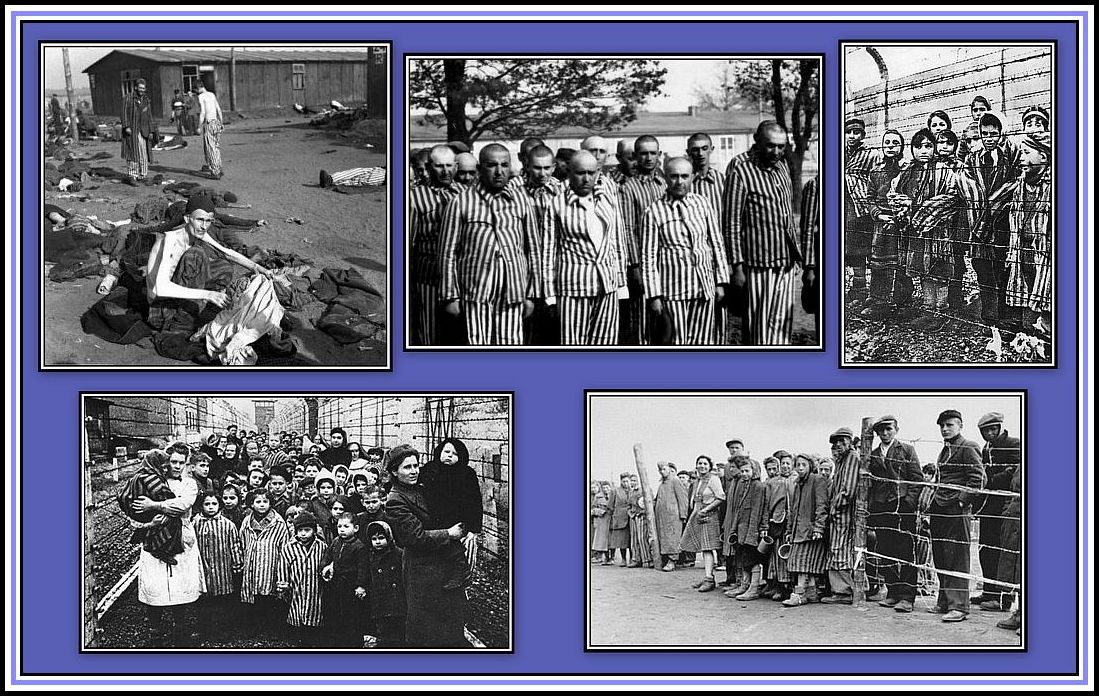 Some of the Survivors
Some of the Survivors
Many of the survivors were too weak to walk or talk. He also said that he found dead babies that had acid burns on their naked bodies. He said that the smell of the place lingered in his nostrils and that he knew that he would never forget what he and his companions had found in that dreadful place.
My father said that they were unable to bury the dead individually, and since it was feared that disease, with Typhus being the main threat, would spread amongst the survivors, they were quickly buried in mass graves and some of the buildings were burned.
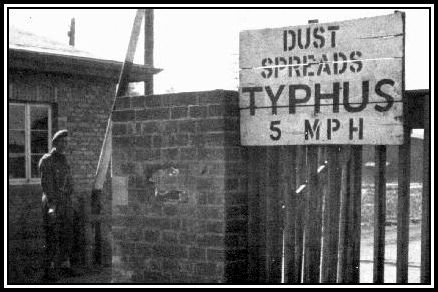
Members of The Camp personnel were made to help bury the victims of the atrocities, however some apparently refused and were shot for Mutiny, as Martial Law had been declared in The Camp upon its liberation.
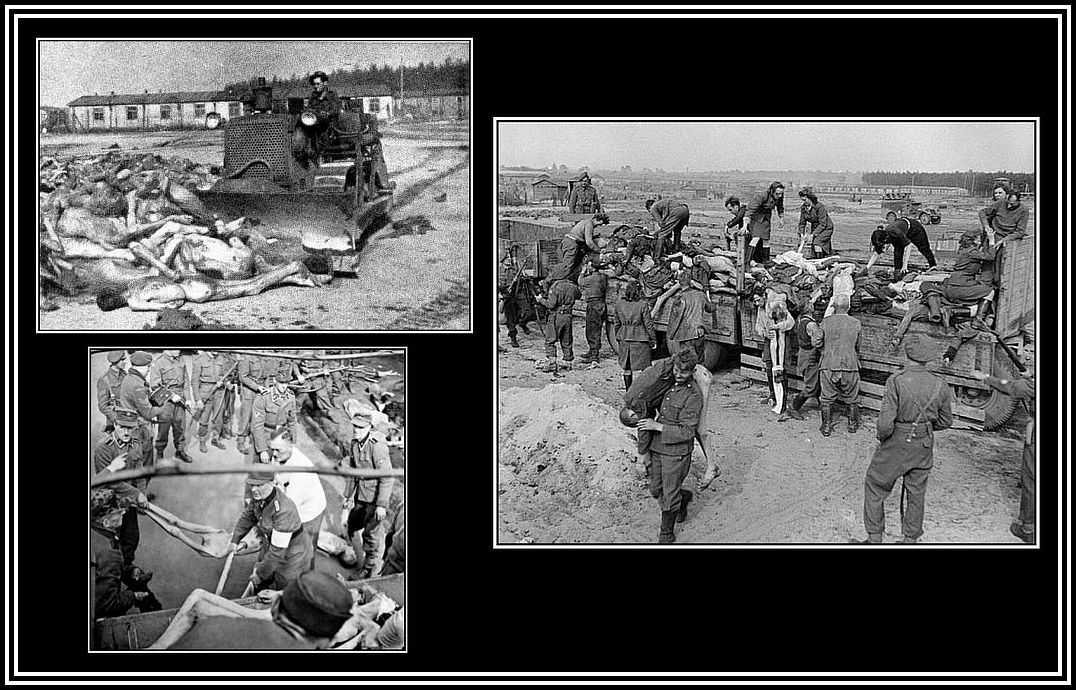 Top Right: British Solider driving a Bulldozer (see comment below);
Top Right: British Solider driving a Bulldozer (see comment below);
Bottom Left & Right: German Soldiers burying victims
The dignitaries of the towns of Bergen and Belsen were brought to The Camp to see the horrors inflicted on the prisoners and many of the towns folk were co-opted to help with the burying of the dead.
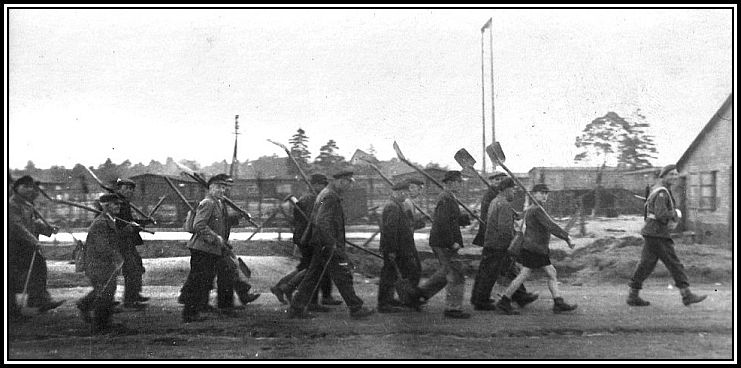 Towns Folk led by a British Soldier to The Camp to help Bury some of the victims
Towns Folk led by a British Soldier to The Camp to help Bury some of the victims
-oOo-
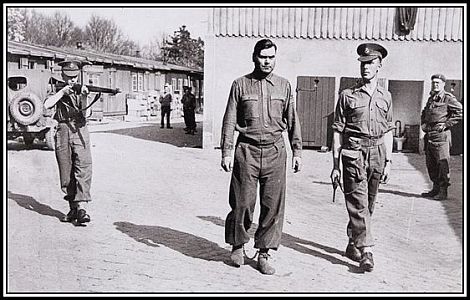 Joseph Kramer, Commandant of The Camp, shown here under arrest
Joseph Kramer, Commandant of The Camp, shown here under arrest
-oOo-
For those wishing to read a more detailed account on The Concentration Camp at Bergen-Belsen, please follow the link to Scrapbooks
-oOo-
During the final months of the Second World War, many Camp inmates were moved from Camp to Camp and made to leave either by train or by forced marches (Death Marches; German: Todesmärsche) in an effort to prevent their liberation by Allied Forces who were now advancing. These marches led to the death of many inmates and continued until the 8th May, 1945 (i.e. V-E Day) when the war in Europe officially ended. The Soviets consider the war to have ended in Europe on the 9th May.
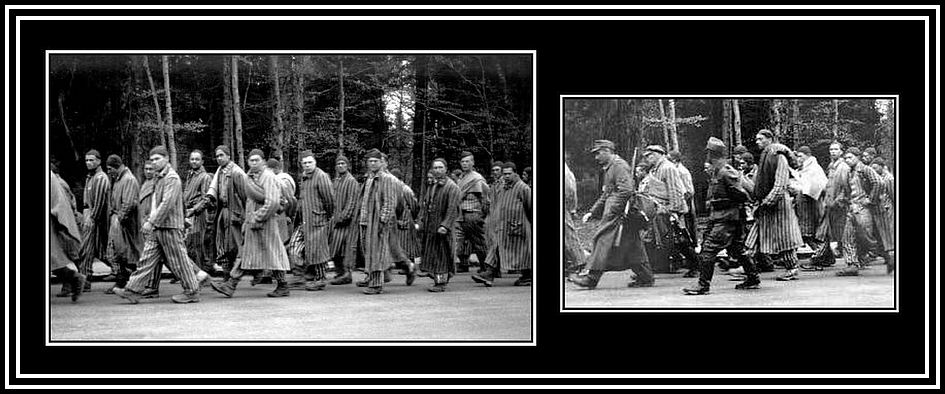 Death Marches
Death Marches
-oOo-
The Second World War in Europe officially came to an end on the 7th May, 1945, V-E Day. The official date ending of the war is the 8th May in the U.S.S.R. and in countries east of Germany. Despite the war officially ending on these dates, some hostility still occurred.
-oOo-
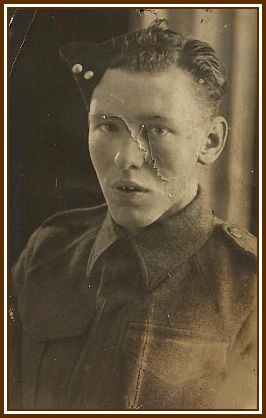 George Smith (1923-1945), Gunner
George Smith (1923-1945), Gunner
My mother’s youngest brother, George, had been conscripted into the Royal Artillery and became a Gunner. He died a short time before the official end of The War on the 21st February, 1945, when he and two Canadian soldiers were shot by sniper fire. He had recently turned twenty-two years of age and is buried in a military grave in Kleve in Germany.
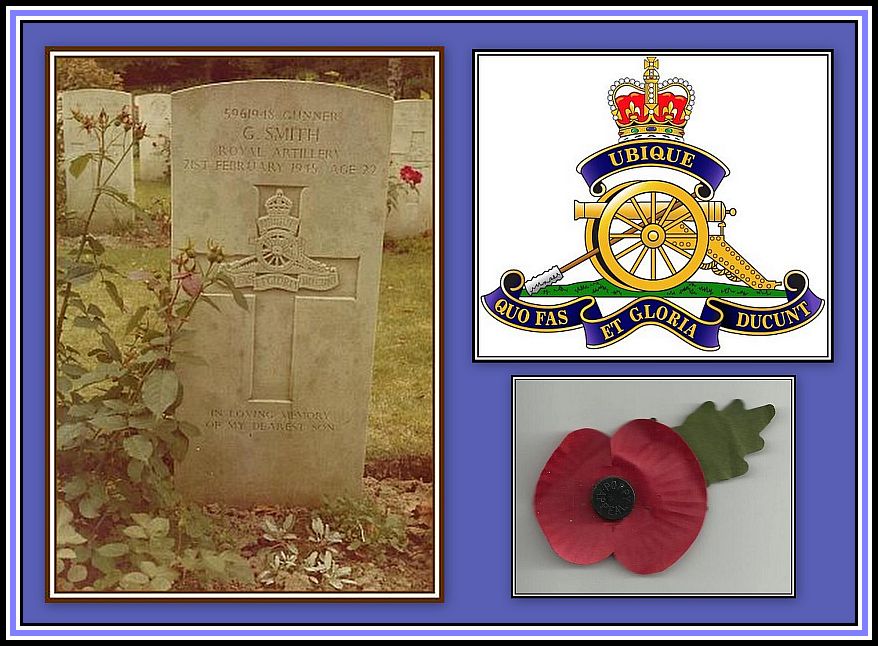
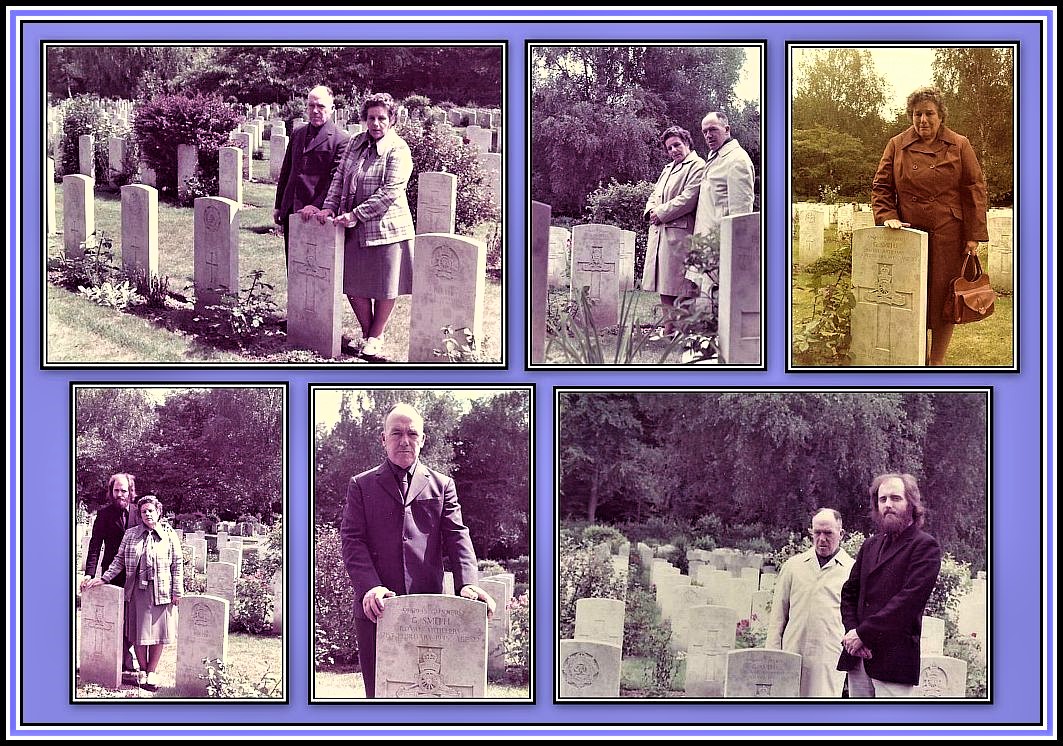 My parents made two visits to the Grave Site together; my mother made a third visit (Top Right) just before moving to the U.S. As this photograph shows, my mother cried a great deal at her brother’s Grave Site. She never visited his Grave Site again.
My parents made two visits to the Grave Site together; my mother made a third visit (Top Right) just before moving to the U.S. As this photograph shows, my mother cried a great deal at her brother’s Grave Site. She never visited his Grave Site again.
-oOo-
My mother’s elder brother, Alfred, joined the British Army as a young man and when The Second World War broke out, he was sent to Malaya. He spent several years in a Japanese Prisoner-of-War Camp where he was tortured. He escaped on one occasion and spent several months hiding in the surrounding jungle. He did not fare well when he returned to Britain and suffered with Malaria and, what is now termed, Post-Traumatic Shock Syndrome. Sadly, he was an alcoholic and constantly lost his Sergeant’s Stripes (Chevrons), and his family, as a result.
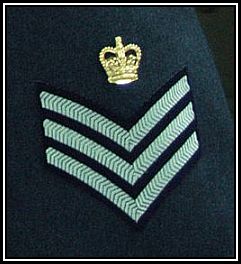
Unfortunately, I do not have any photographs of my Uncle Alfred, and sadly, I have no idea where he is buried.
-oOo-
On the 27th July, 1945 at the Potsdam Conference, the Allies called for the unconditional surrender of Japan. The Japanese Government refused to comply. However, in August 1945 following the dropping of two atomic bombs on the cities of Hiroshima and Nagasaki by the U.S.S.A.F., Japan surrendered unconditionally on the 15th August, 1945 (V-J Day in Britain). The surrender was signed on the USS Missouri on the 2nd September, 1945 (V-J Day in the U.S.), thereby bringing an end to the war. However, some Japanese soldiers continued to fight on isolated Pacific islands until at least the 1970s with the last known soldier finally surrendering in 1974.
-oOo-
My father, like all military personnel of The Second World War, was awarded a number of medals. I remember playing with them as a child, but I fear that they were lost during our move from London to Langley in 1956. I regret their loss very much.
-oOo-
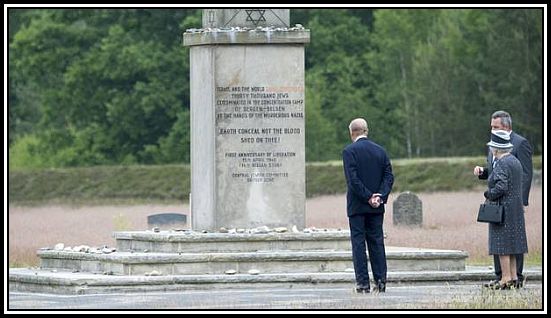 The Queen and Prince Philip visited the Concentration Camp at Bergen-Belsen in June 2015
The Queen and Prince Philip visited the Concentration Camp at Bergen-Belsen in June 2015
-oOo-
The atrocities that The Nazi Regime are guilty of cannot be forgotten and seem like the actions of a group of madmen. Just thinking of what they did in the name of their beliefs seems impossible for sane and rational people to undertake, but their actions proved that there were those willing and able to put into practice heinous and barbarous acts.
What we need to remember is that the activities and atrocities sanctioned by The Nazis were not all new to mankind. People have been committing atrocities against others since the beginning of time. However, what is almost too dreadful to contemplate is that following The Second World War and the discoveries of the horror Camps of The Nazis and the Japanese, it was our responsibility to see, as Jews the world over say, that such crimes should never happen again to them or any group.
However, we seem to have learned little from the past and we still have not found a way to rid the world of such abusive behaviours. We have only to read the newspapers, watch television or listen to the radio to learn of the numerous wars, skirmishes and regime changes that the world has watched and endured since 1945 to know that such heinous brutality – Crimes against Humanity – have continued and that we have not felt sufficient shame to bring about their end.
-oOo-
As Edmund Burke (1729-1797) said: the only thing necessary for evil to triumph is for good men to do nothing.
—-oooOooo—-

Charles
A very informative history lesson. However, there is an error. Bergen-Belsen did NOT have OVENS on the premises. Inmates died in their huts, where they stood or collapsed. Horrific in every way. My late husband Jamie, was the FIRST British soldier to enter Bergen-Belsen and had to remain there for the next six months as a bodyguard to an Italian Jewish Rabbi who had also been an inmate. The Rabbi had to collate names, dates and history from the inmates in readiness for The Nuremburg Trials. Jamie even attended a wedding between an British soldier and a woman inmate. Jamie was there to witness how those that survived were brought back form a living hell. Many of course carried on dying after liberation – as they were too far gone medically.
Charles
You have my sympathy for the loss of your mother’s younger brother George – your uncle. Whereby, you have also lost out further by not having an extended family. Wars’ a Bitch!
Alfred the elder uncle… probably turned to drink to blot out he’s horrific memories. Japan prisoner-of-war camps were as deadly as the European death camps. Every soldier deals with their war history differently. Horrific time in world history. Must never be forgotten!
Well known fact the Bulldozer committed suicide. Large photograph of him in The Imperial War Museum.
British Soldier standing at the back of the British soldiers in charge of the ex-German guards depositing the dead victims into the pit. Looks very much like my late husband.
Charles
Have you thought to investigate Dr. Menglier (probably spelt wrong). Experimented upon young Jewish children – mainly twins. Another horror story. France confiscated his records.
Charles
Our condolences for the loss of your uncle at such a young age.
As a boy growing up in London during WWII, I remember reading the newspaper reports of the liberation of Bergen-Belsen and talking about it at school. As 10-year-olds at the time, we did not really understand what it was all about. Thanks for your vivid description.
Thank you for leaving your comment. Charles
Being the age I am, I recall with great clarity the newsreels at the end of the War [no daily TV news of course] with the appalling scenes from liberated Germany. Since then I have read extensively about those times and to be honest, your amazing and immediate presentation did not inform me a great deal more – and I had seen pretty much all of the pictures. No matter, this information must be placed on record for others’ education and in a very readable way. There is a terrible amount of anti-holocaust propaganda out there and by virtue of its very nature the internet has very much to answer for. “Free for All” is a wonderful thought but very much a mixed blessing.
Personal reflection from those who actually were there is always the most precious. My father-in-law fought in and survived Burma, my cousin [who died in his 101st year] came through two shipwrecks in the course of the north Russian convoys: he published books and and gave a TV presentation about this which in addition to telling the world conspired to rid him of the nightmares and worse that beset others. My two sons-in-law hung on Frank’s every word – The Ship that Torpedoed Itself is still on Amazon.com I believe.
My wife and I hope to visit Krakow and Auschwitz in the early part of next year. It will be a far from pleasant experience we know but needs to be done. This leads me to a book by Anita Lasker-Wallfisch “Inherit the Truth 1939-1945”. She played in the Women’s Orchestra in the camp under Alma Rosé [niece of Mahler and daughter of Arnold Rosé, long term leader of the Vienna Philharmonic until he was thrown out in 1938]. Both teenagers, she and her sister survived both attempted suicide at the outset of arrest and incarceration. A cellist, she came to England in 1945/6 and later co-founded the English Chamber Orchestra. She married pianist Peter Wallfisch. All their descendants are professional musicians and I met her son, Raphael, following his cello recital in a nearby town. He signed his mother’s book for me. She’s over 90 and there’s quite a bit about her on Youtube [there’s a link at the end]. There’s also available a recording [the only one out there] of Alma Rosé playing Bach with her father in 1928.
My incomprehension of anti-Jewish sentiment extends I am sure from the age of 7 when my best friend at school, Richard Cohen, and I were inseparable. His parents were so kind and generous. Very cultured too. We lost contact at 12 – went off to different schools – but I traced him about 5 years ago and we meet for lunch and visits to the Opera.
Kudos to you, Charles, for this amazing history and reminiscence. A harrowing story, and one we must never forget. You did an outstanding job of research and documentation, and you sure know how to tell a good story. The photos are powerful and will haunt me for a long time.
Hi Charles, thank you very much for sharing this excellent capturing of the worlds worst atrocities and the account of its history.
When you and I were at school together in London, I was too immature to really understand the gravity of what had happened and it was only later in life I learned of the horrors that occurred. This I have never forgotten or forgiven!
It was not exactly clear to me in your introduction about your Father as to whether he was an inmate of Belson or if he was one of the British liberating soldiers( my guess is the latter?).
I clearly remember asking my four Children over a family dinner in Sydney about 7 years ago what they new about the Holocaust, and was completely dismayed to discover that the schools they went to in Australia and not taught them very much at all of this horrific event and could not relate to it- a real indictment in my opinion- at least on the schools that my kids went to (which were good privately funded catholic schools!).
I believe that this topic should be mandatory learning for all kids at some stage of their schooling so that they can learn from history what misery and suffering this brought to the world at that time.
Even today,with all the instantaneous media coverage around the world we learn daily of atrocities to the human race and acts of genocide by lunatic dictators around the world, but our children in countries like Australia seem to accept it as ” just another event on the news”!
One day when I get enough time, I will read all of your writings on this extraordinary matter and learn more and to remind me to not let my children and grand children dismiss this appalling event in History.
Thanks again Mate.